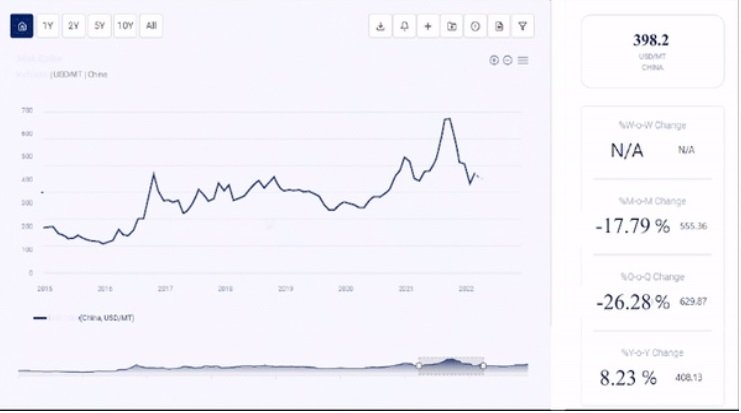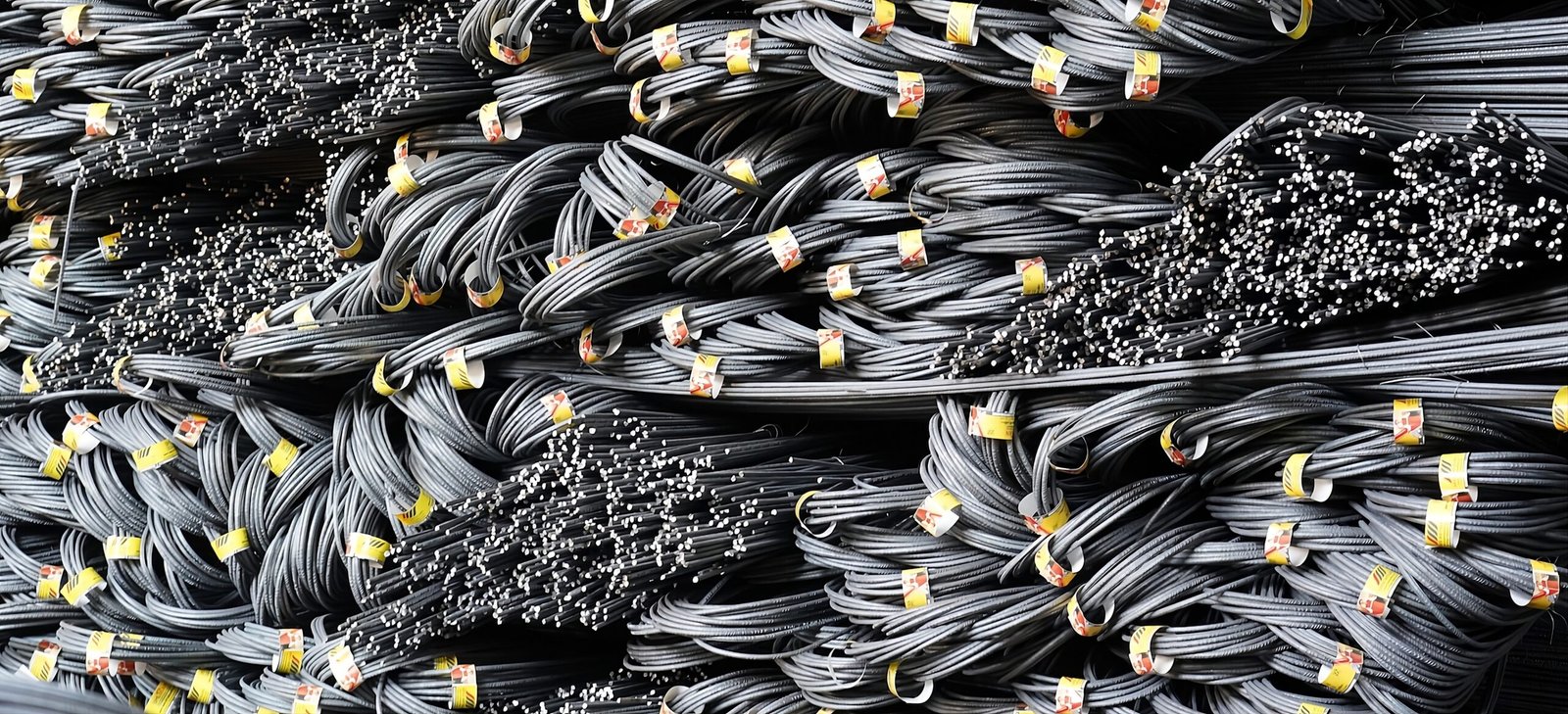Nitroethane is an organic compound with significant industrial applications, including its use as a solvent, in fuel additives, and in various chemical manufacturing processes. As a critical chemical, its price trends are influenced by a variety of factors, including supply-demand dynamics, production costs, and global market conditions. In this article, we explore the nitroethane price trend, incorporating key market analysis, historical data, and future forecasts, providing a comprehensive view of how prices are likely to evolve in the coming years.
Prices: Latest Price Overview
The price of nitroethane fluctuates based on several market forces, including raw material costs, production capacity, and geopolitical factors. Although prices are influenced by multiple variables, the latest market data provides insight into how the compound is priced in various regions and for different applications. By closely monitoring industry reports, procurement professionals and stakeholders can better understand how the price trajectory is shifting and make informed purchasing decisions.
The latest prices of nitroethane are heavily influenced by trends in its production costs and the availability of feedstocks. Prices in the chemical manufacturing and fuel industries are subject to fluctuations in response to changes in supply and demand. With increasing industrial applications, the demand for nitroethane continues to grow, further impacting its price point. Tracking these movements is crucial for businesses involved in its procurement or usage.
Request For Sample: https://www.procurementresource.com/resource-center/nitroethane-price-trends/pricerequest
News: Key Events Impacting Nitroethane Prices
Recent news highlights several factors that have affected the price of nitroethane. Regulatory changes in key markets, such as shifts in environmental policies or restrictions on chemical production, may influence supply chains and manufacturing processes. Additionally, significant events in the oil and gas sector, which affect feedstock prices for nitroethane production, have led to price volatility.
The ongoing developments in energy markets, including the adoption of renewable energy sources and their impact on the chemical industry, are likely to play a significant role in shaping the future pricing trends for nitroethane. Furthermore, geopolitical tensions or natural disasters in key production regions can disrupt supply chains, leading to unexpected spikes or drops in prices.
Market Analysis: Influencing Factors and Supply-Demand Dynamics
The nitroethane market is driven by both domestic and international factors. The demand for nitroethane is particularly high in the fuel and automotive industries, as it serves as an additive to enhance fuel performance. Additionally, it is used in the production of other specialty chemicals, which further elevates its market importance.
Supply Chain Issues: Supply disruptions, whether due to production outages, transportation bottlenecks, or geopolitical instability, can have a ripple effect on the price of nitroethane. Recent disruptions in raw material supply chains have contributed to price hikes in many chemical sectors, including nitroethane.
Demand Trends: As countries expand their chemical manufacturing sectors, the demand for nitroethane has steadily increased. Nitroethane’s use in specialty solvents, coatings, and adhesives further boosts its demand. Increased regulatory pressure for cleaner fuel solutions may also increase the adoption of nitroethane in fuel formulations, which could impact long-term price trends.
Raw Materials: The cost of raw materials, particularly ethylene and nitric acid, plays a critical role in determining the overall production cost of nitroethane. Volatility in the prices of these raw materials directly affects the price of nitroethane in the global market.
Historical Data: A Look at Past Price Movements
Understanding the historical data surrounding nitroethane prices helps provide context for current market conditions. Over the past decade, prices have experienced periods of stability and volatility. Price surges often coincide with disruptions in the raw material supply chain or spikes in global energy prices, while periods of economic downturn tend to see a dip in demand for non-essential industrial chemicals, causing prices to fall.
In the early 2000s, the price of nitroethane remained relatively stable, primarily driven by steady demand from industrial applications. However, in the last decade, the price has become more sensitive to fluctuations in raw material costs, supply disruptions, and geopolitical factors. As markets adjust to global economic changes, tracking historical price movements remains essential to understanding the broader trends and anticipating future price behavior.
Forecast: Future Price Trends for Nitroethane
Looking ahead, the price of nitroethane is expected to continue its upward trajectory, influenced by both global supply-demand imbalances and the increasing importance of the compound in various industrial processes. Experts predict moderate growth in demand for nitroethane as the global economy rebounds post-pandemic, further escalating the pressure on prices.
Several key factors will play into future forecasts:
- Production Capacity: As manufacturers increase production capacities to meet growing demand, economies of scale may help moderate the rise in prices.
- Raw Material Availability: The availability and cost of ethylene and nitric acid will continue to influence price forecasts. Any disruptions in these critical raw materials could result in sharp price hikes.
- Regulatory and Environmental Factors: Stricter environmental regulations may alter production practices, adding costs but potentially also leading to innovations that could stabilize prices.
- Global Energy Prices: Since energy costs are integral to the chemical production process, fluctuations in global energy prices will continue to affect the cost structure of nitroethane production.
Forecasting future prices is critical for businesses in the chemical, automotive, and fuel sectors to plan their procurement strategies and ensure that they are prepared for potential price fluctuations. Market reports, database insights, and analysis from industry experts can provide valuable foresight for those looking to stay ahead of pricing trends.
Database and Chart: Nitroethane Price Tracking
Tracking nitroethane prices requires a comprehensive database that includes real-time data, historical trends, and projections for future price movements. A well-maintained price chart that presents this data over time can help stakeholders better understand how the market is evolving.
Price tracking databases typically provide the following:
- Historical Pricing Data: Access to past pricing data helps businesses identify trends, seasonal fluctuations, and any correlations between supply chain events and price changes.
- Real-Time Pricing: Live price tracking gives businesses and manufacturers the tools to respond quickly to price shifts, enabling more agile decision-making.
- Forecast Data: Detailed projections based on current market conditions, economic indicators, and historical trends assist in long-term planning.
Including a price chart can visually represent how nitroethane prices have fluctuated over time, allowing businesses to make data-driven decisions. The ability to view and analyze these trends in a user-friendly format aids in predicting future price movements.
Request for the Real-Time Prices
For companies actively involved in the procurement of nitroethane or looking to monitor prices closely, having access to real-time data is crucial. Prices can fluctuate significantly due to supply disruptions, changes in demand, or shifts in production costs. To get the most up-to-date price information, businesses are encouraged to request real-time prices directly from industry sources.
By using services that offer live price tracking, businesses can ensure they are always informed about the current market conditions and pricing trends. These resources are indispensable for making timely purchasing decisions and securing the best possible deals.
Regional Insights & Analysis
The nitroethane market is geographically diverse, with key production hubs located across different regions. Regional factors such as local demand, supply chain infrastructure, and economic conditions significantly affect the price of nitroethane in various markets.
- North America: In the U.S. and Canada, where the chemical manufacturing sector is robust, nitroethane prices are impacted by the availability of raw materials, energy costs, and regional environmental regulations. The demand from fuel additives and the automotive industry is particularly high, contributing to price trends in the region.
- Europe: In Europe, the demand for nitroethane is driven by industries such as specialty chemicals, coatings, and adhesives. Price trends here are affected by both local economic conditions and broader EU regulations on chemical manufacturing and emissions.
- Asia-Pacific: With rapid industrialization in China and India, the demand for nitroethane in Asia is expected to grow steadily. However, supply chain disruptions in raw materials or transportation logistics can cause prices to fluctuate.
- Latin America: The Latin American market is more price-sensitive, and demand for nitroethane is primarily driven by its use in niche applications. Economic volatility in the region can contribute to sudden price movements.
Procurement Resource plays a key role in providing businesses with region-specific insights and market intelligence. By offering up-to-date pricing, forecasting tools, and market analysis, Procurement Resource helps industry stakeholders stay informed about regional price dynamics.
By understanding the regional price trends, businesses can tailor their procurement strategies to better suit local market conditions, helping them manage costs more effectively.
Contact Us:
Company Name: Procurement Resource
Contact Person: Endru Smith
Email: sales@procurementresource.com
Toll-Free Number: USA & Canada - Phone no: +1 307 363 1045 | UK - Phone no: +44 7537171117 | Asia-Pacific (APAC) - Phone no: +91 1203185500











Leave a Reply